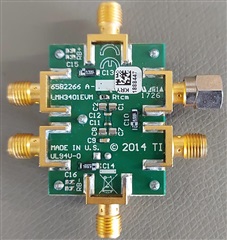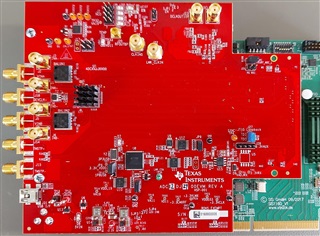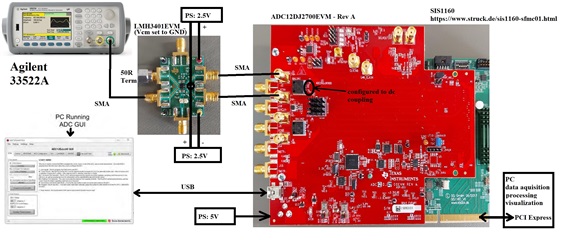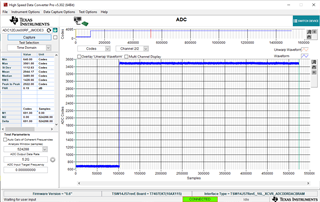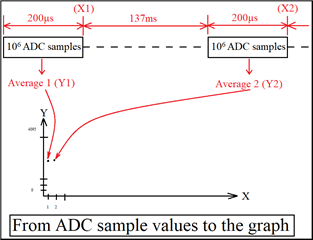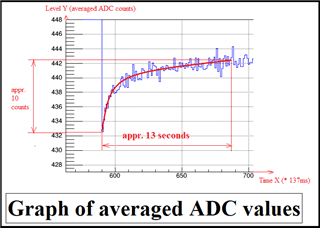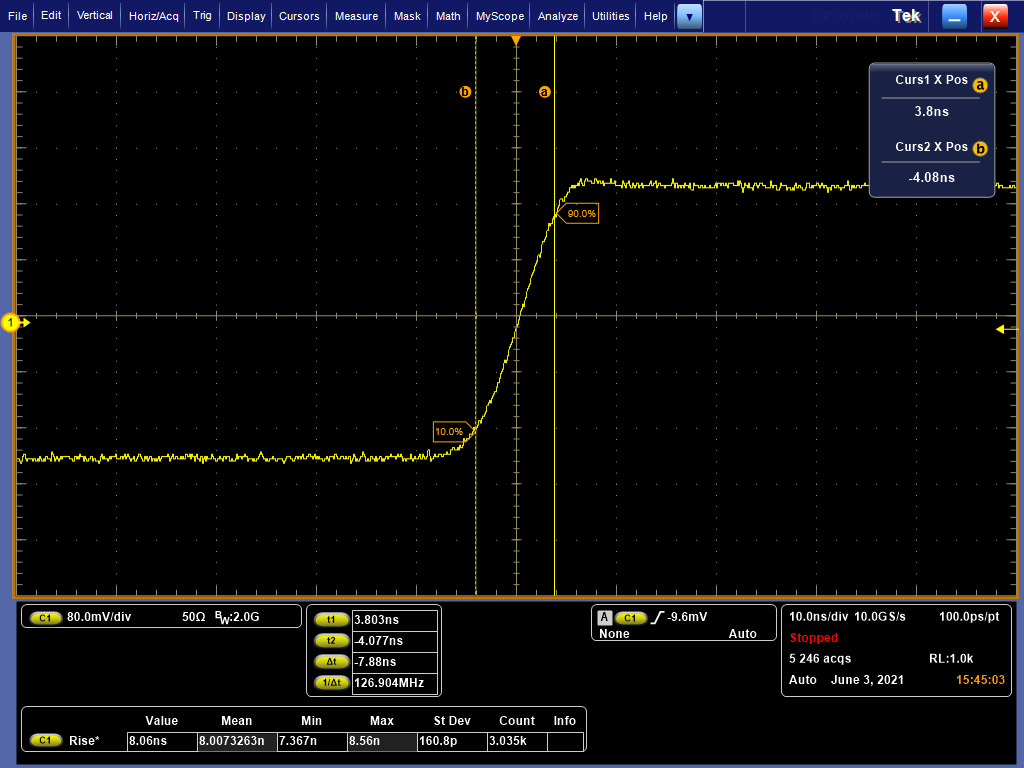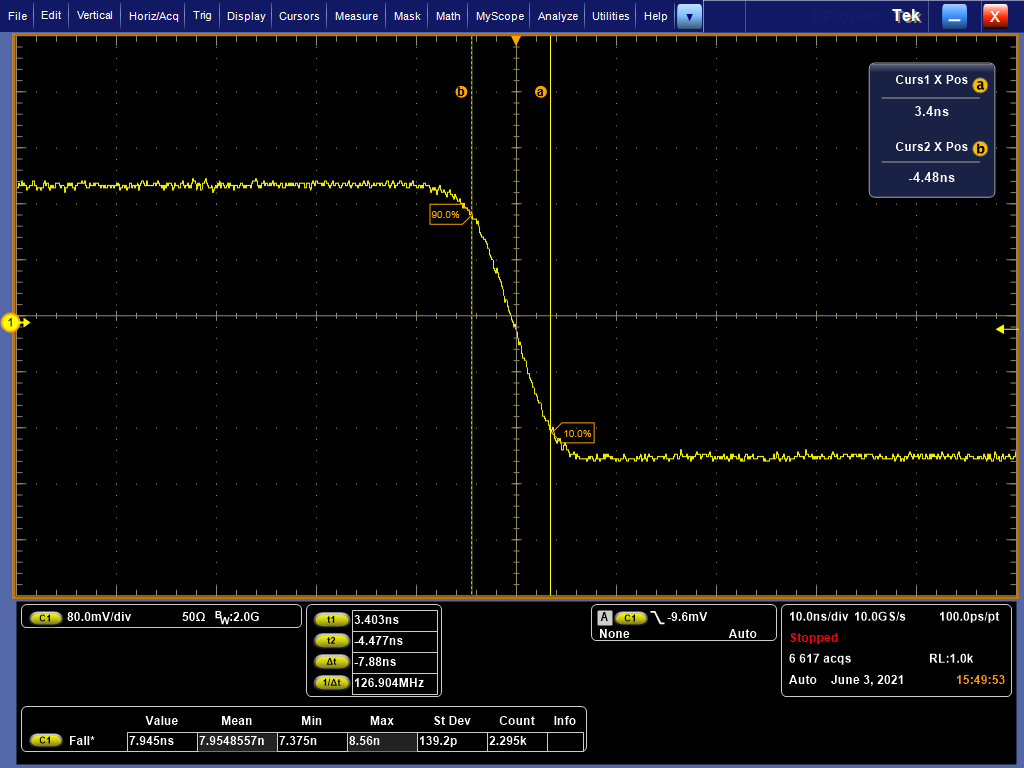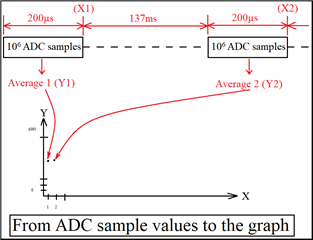Other Parts Discussed in Thread: LMH5401EVM, LMH3401EVM, LMH3401, LMK04828, LMX2582
Hi everyone,
we have an issue with adc samples reaching a stable baseline after changing dc input level.
Following a detailed description:
Hardware:
- Evalboard ADC12DJ2700EVM
- Evalboard LMH5401EVM (CM input connected to GND)
- AWG square wave 50 second high, 50 second low (level like to see in sample data)
Setup with "ADC12DJxx00 GUI":
- Evalboard LMH5401EVM SMA IN+ driven from AWG square waveform (dc coupled), SMA IN- terminated 50 Ohm
- LMH5401EVM SMA Out +- connected to ADC12DJ2700EVM SMA INA+- (Channel A dc coupled)
- ADC clock 2.5 GHz (onboard generated)
- ADC analog input range default
- JMode 0 (single channel 5GSPS)
- ADC data format offset binary (data decimal 2048 correspond to differential input level 0V)
- One time ADC setup and started, continously free running sampling
- taking samples from adc data stream after certain delay
Data processing:
- each point along x-axis in diagram correspond to an average over 1 million samples (0.2ms trace)
- every 137ms one data point
- AWG level adjusted to ADC data about decimal 3655 (high level) and 445 (low level)
- see picture screen4.png
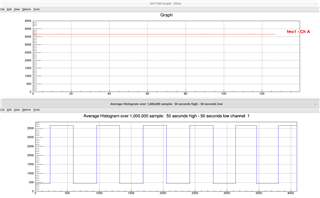
What we can observe:
- at the signal edge (rising or falling), the "Average data point" shows an overshoot
- see picture screen2.png and screen3.png


- like an capacitor charge or discharge curve, the "Average data point" needs some time (~1 Minute?) to reach a stable value (baseline value)
- zoomed in of overshoot region, see picture screen5.png and screen6.png


Can you confirm this behavior?
Can this be improved or avoided?
Best regards
Andreas



